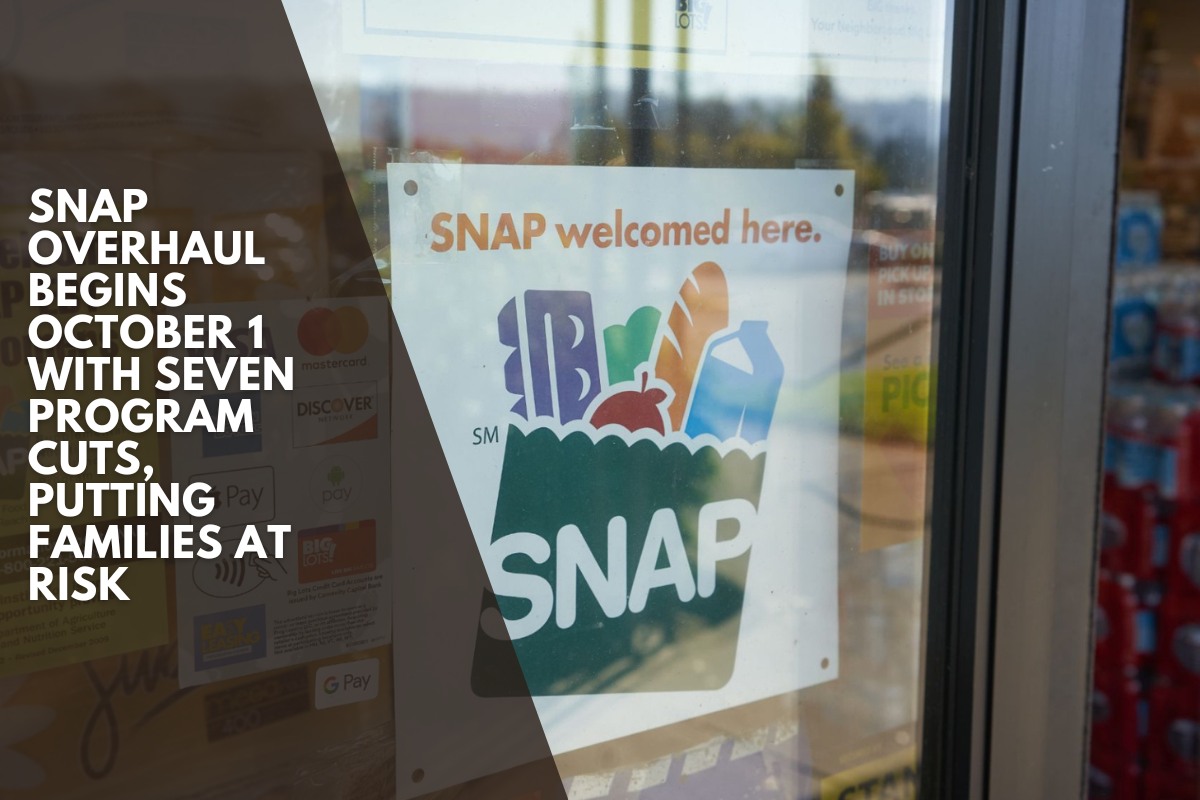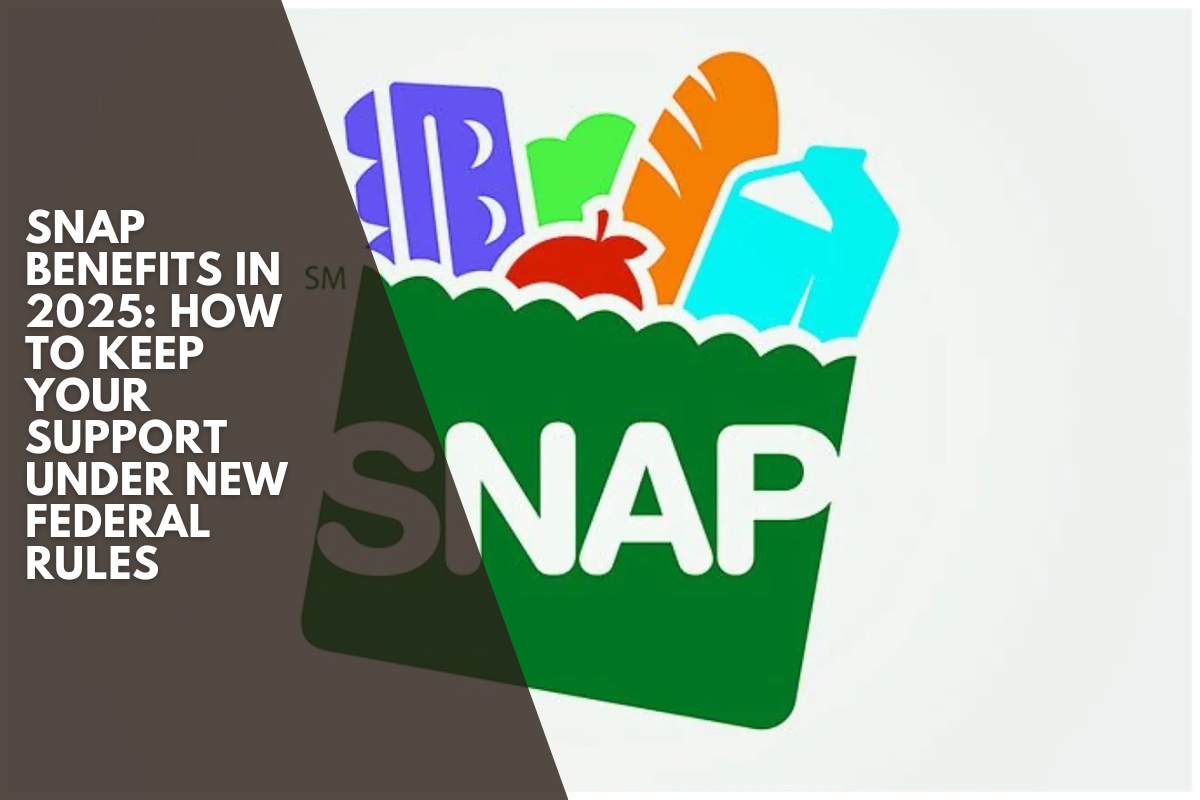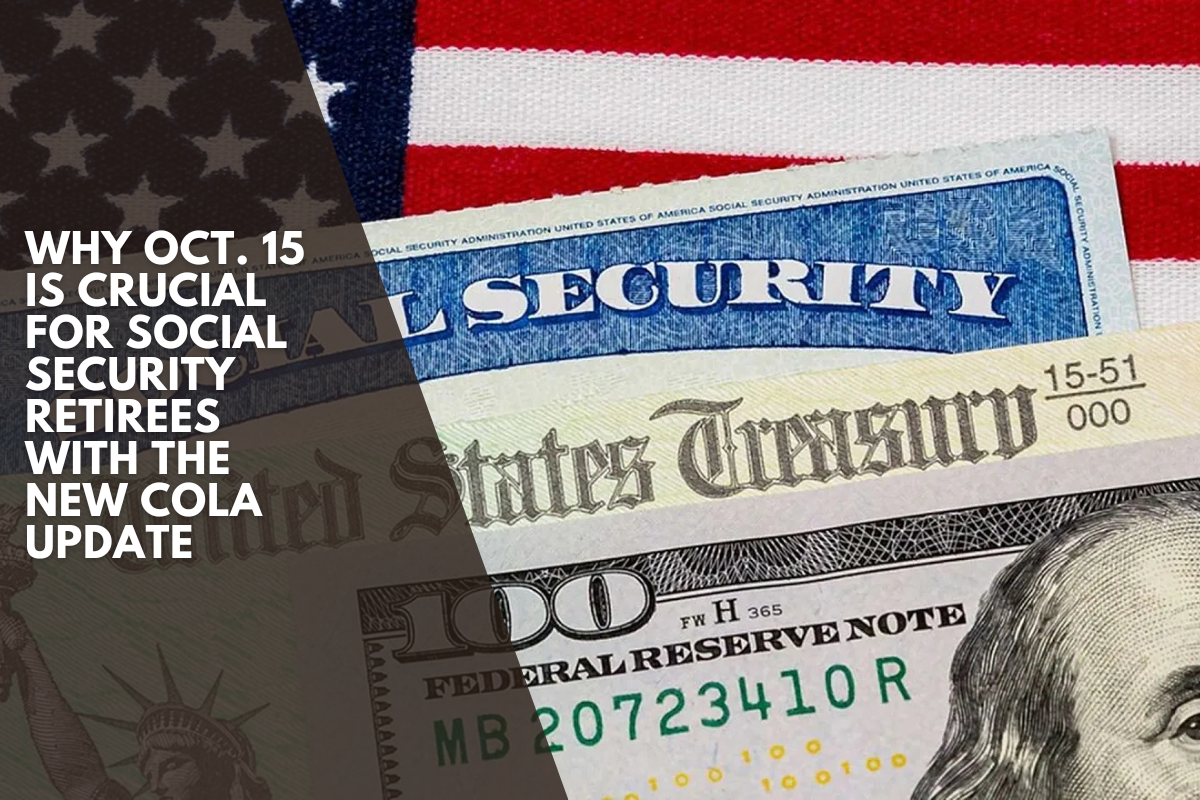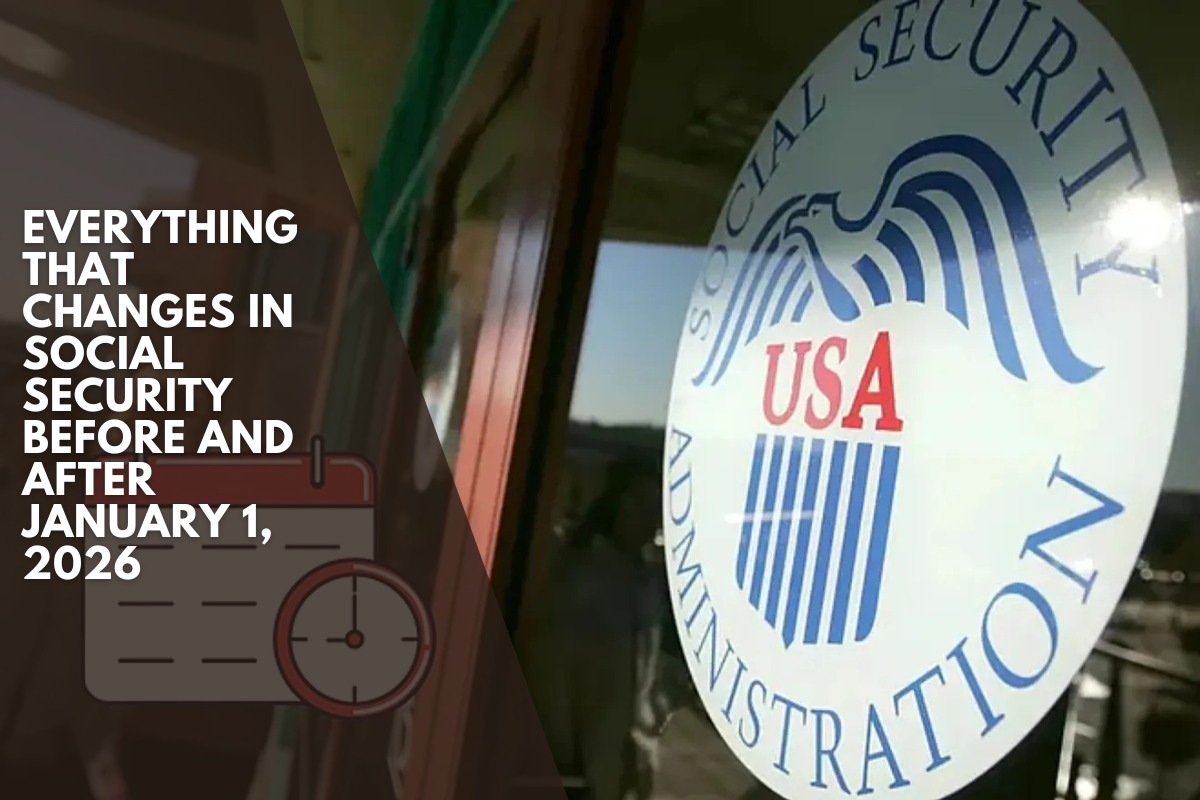Seniors are leaving up to $2,400 unclaimed each year due to hidden Social Security and Medicare programs. Don’t miss out on benefits that can lower your healthcare costs!
Did you know that 89% of Medicare-eligible seniors leave $2,400 on the table each year? If you’ve ever felt like you’re overpaying for healthcare, you’re probably correct—and there’s something you can do about it right now.
Most people believe they know everything about Social Security and Medicare benefits. However, here’s a surprising truth: there are hidden programs worth thousands of dollars per year that most seniors are unaware of, let alone apply for.
What if I told you that you might be eligible for benefits that will reduce your Medicare premiums to zero and eliminate the majority of your medical copayments? Keep reading because this isn’t about traditional Social Security—it’s about the underutilized programs that could change your monthly budget.
The hidden benefits landscape most seniors never discover
The reason these valuable benefits remain hidden is not because you haven’t looked hard enough. The system itself keeps them buried.
Government agencies do not actively promote these programs. There is no automatic enrollment, no friendly reminder in the mail, and certainly no sales team calling to let you know you are eligible.
Instead, you are responsible for discovering, understanding, and navigating complex application processes, which can be overwhelming. Many seniors believe that if they were eligible for additional assistance, someone would have notified them by now.
Here’s the truth: Every year, billions of dollars in benefits go unclaimed because eligible seniors are unaware that these programs exist. Eligibility requirements are frequently much broader than people realize, and many programs can be combined to maximize savings.
Even more frustrating? Many seniors who were denied benefits in the past may now be eligible because income limits and program rules change on a regular basis. Others believe they earn “too much” or have “too much” to qualify, but the reality is quite different.
The $2,400 game-changer: Medicare savings programs
The most overlooked benefit? Medicare Savings Programs (MSP) can eliminate your Medicare premiums and significantly lower your out-of-pocket expenses.
These four programs offer varying levels of assistance.
A Qualified Medicare Beneficiary (QMB) pays your Medicare Part A and Part B premiums, deductibles, and copayments. For most people, this means saving the $174.70 monthly Part B premium alone, which is more than $2,000 per year.
Specified Low-Income Medicare Beneficiary (SLMB) pays your Medicare Part B premiums, saving you the same $174.70 per month.
Qualifying Individual (QI) offers additional Part B premium assistance on a first-come, first-served basis.
Qualified Disabled and Working Individuals (QDWI) assists working disabled people with Medicare premiums.
The income limits are greater than most people realize. Individuals can earn up to $1,357 per month and couples up to $1,823 per month in 2024 while remaining eligible. Individual asset limits are $8,400 and $12,600 for couples, with the exception of your primary residence and one vehicle.
When you are approved for these programs, you are automatically eligible for Extra Help with prescription drug costs, potentially saving hundreds more per year. Some programs also offer protection against balance billing and may entitle you to additional state benefits.
The stack that could save you $5,000+ annually
Medicare Savings Programs are just the beginning. Smart seniors combine multiple benefit programs for maximum impact.
Low Income Home Energy Assistance Program (LIHEAP) can save you $300-$1,200 annually on heating and cooling bills. Many states also provide weatherization services and emergency heating repairs through this program.
Supplemental Nutrition Assistance Program (SNAP) provides $1,500-$3,000 annually in grocery assistance. Senior eligibility rules are often more generous than general population requirements, and some areas even allow restaurant meals for homebound seniors.
Property Tax Relief Programs vary by location but can save $500-$2,000 annually through exemptions, reductions, or deferrals. Some programs allow you to defer property taxes entirely until you sell your home.
Utility Assistance Programs offer $200-$800 per utility through reduced rates, connection fee waivers, and efficiency upgrades. Many utilities provide free appliance replacements for qualifying seniors.
Prescription Drug Assistance Programs can save $500-$5,000 annually through manufacturer programs and state pharmaceutical assistance. These often work alongside Medicare to cover gaps in coverage.
When you combine these programs strategically, you’re looking at potential annual savings of $5,000 or more. And here’s the key: qualifying for one program often makes you automatically eligible for others, creating a beneficial domino effect.
Your step-by-step action plan to claim what’s yours
Ready to stop leaving money on the table? Here’s your systematic approach to claiming these benefits.
Start with documentation gathering. You’ll need your Social Security card, Medicare card, recent bank statements from the past three months, proof of income including Social Security and pension statements, property tax records, and utility bills.
Apply for Medicare Savings Programs first since approval here often triggers automatic eligibility for other programs. You can apply through your state Medicaid office, online, or by calling Medicare directly.
Use your State Health Insurance Assistance Program (SHIP) for free, personalized help navigating the application process. These trained counselors understand the programs and can help you avoid common mistakes.
Complete a comprehensive benefits screening using free tools like BenefitsCheckUp.org, which asks about your specific situation and identifies all programs you might qualify for.
Apply systematically rather than randomly. Start with the programs offering the biggest savings, then work your way down. Keep copies of all applications and follow up monthly on pending applications.
The key is persistence. If you’re denied initially, ask why and what you can do to qualify. Rules change, and what didn’t work last year might work now. Also, consider getting help from your local Area Agency on Aging—they’ve seen it all and know exactly how to navigate the system.
Breaking through the myths that keep you from applying
Let us address the common misconceptions that keep capable, eligible seniors from claiming their benefits.
“I own my home, so I won’t qualify.” This is the biggest myth. Most programs do not consider your primary residence when calculating asset limits. Agencies are more concerned with liquid assets, such as savings accounts, than with home equity.
“My Social Security check is too high.” Income limits are frequently much higher than people expect, and many programs calculate net income after deducting medical expenses. Do not disqualify yourself without applying.
“These programs are for people poorer than me.” These aren’t poverty programs; they’re intended to assist middle-income seniors dealing with rising healthcare costs. Many families find themselves in unexpected financial difficulties, and these programs are specifically designed to help them.
“The paperwork is too complicated.” Free assistance is available at senior centers, libraries, and through SHIP counselors. You don’t have to do this alone; most applications can be completed online or over the phone.
“I tried before and was denied.” The rules governing eligibility change on an annual basis, and your circumstances may have also changed. What didn’t work before might work now.
Remember, these are benefits you’ve earned through years of contributing to the system. It is not shameful to claim what is rightfully yours.
Taking control of your financial future this week
You do not need to wait months to begin this process. Here’s what you can complete this week.
Monday & Tuesday: Gather your information. Collect the previously mentioned documents and make a simple list of your monthly income and expenses. This preparation simplifies everything else.
Wednesday: Establish initial contact. Call your state’s SHIP program and make an appointment. Visit BenefitsCheckUp.org for a personalized screening that takes about ten minutes.
Thursday: Start your first application. Focus on Medicare Savings Programs because they frequently have the greatest impact and can trigger eligibility for other programs.
Friday: Follow through. Confirm that your applications were received and inquire about expected processing times. Create calendar reminders for follow-up calls.
This isn’t about navigating endless bureaucracy; it’s about spending one week to potentially transform your monthly budget for years to come.
Just as learning new technology does not have to be overwhelming when done gradually, claiming your benefits becomes manageable when broken down into small, concrete steps.
These advantages can significantly reduce long-distance caregiving stress by improving their loved one’s financial stability. And for those considering senior living options, understanding these advantages is critical before evaluating retirement community contracts.
Your money, your choice, your future
Every month you wait means money is left on the table—money that could help your budget, reduce stress, and improve your quality of life.
These are neither handouts nor charity. These are benefits designed specifically for people like you who have worked hard, contributed to the system, and deserve help navigating rising healthcare costs.
The 89% of seniors who are not receiving these benefits do not do so because they are unworthy of them. They are missing out because they are unaware of them or believe the process is overly complicated.
You are no longer part of that 89%. You have the information, an action plan, and the resources to get the assistance you require.
The only question left is when you’ll start claiming what you already have.
Have you researched any of these benefit programs before? What’s been holding you back from applying? Share your experience in the comments section; your story could help another reader take the first important step toward financial relief.












